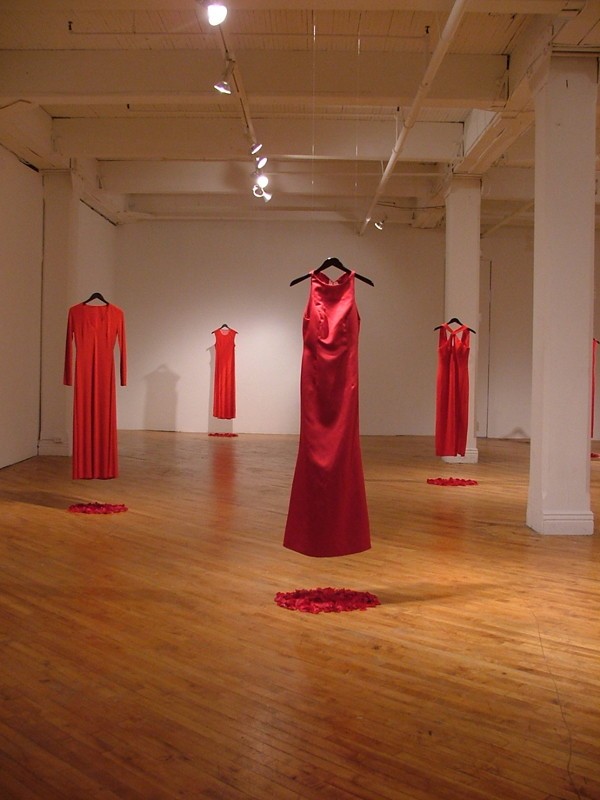Dressing the campus red
Campus-wide art installation illuminates plight of missing and murdered aboriginal women
Jaime Black’s weapon of choice is a red dress.
Armed with more than 100 of them, her installation The REDress Project at the University of Winnipeg will be impossible to miss.
Black’s goal is to raise awareness about the more than 580 missing and murdered aboriginal women in Canada, with each dress representing one of the victims.
“The colour red is pretty important in the project,” said Black, who has been working on the project for over a year.
“Colour is able to represent the positive and negative aspects of being an aboriginal woman in our society today. The colour could represent passion, menstruation, femininity and sexuality and also negative things being violence and blood.”
The Institute of Women and Gender Studies (IWGS) partnered with Black on the endeavour after they were approached to do workshops around the project.
“We at the IWGS have been working with folks and the community on the issue of missing women in Canada for two years,” said Kim Hunter, IWGS projects and events co-ordinator. “It’s a great opportunity to do a large-scale installation in a place where folks who may not have awareness about missing aboriginal women come.”
Inspiration for the project came from Black’s previous knowledge of the aboriginal art world and witnessing how art and politics can be merged together at a Columbian performance art conference.
“ As a Métis woman I’m aware of the dangers and constant threats of violence that women are often faced with in an urban setting. It is important people learn about this issue.
Jaime Black, artist, REDress Project
She felt propelled to bring that relationship back with her to Winnipeg.
“As a Métis woman, I’m aware of the dangers and constant threats of violence that women are often faced with in an urban setting,” Black said. “It is important people learn about this issue and that people have a different understanding of where aboriginal people come from than what is accessible generally about aboriginal women’s lives.”
The installation include eight installation sites, which will include between three and 40 dresses.
“The dresses have all been donated, which means that each comes with their own story. Some are new or gently used, but most carry the story of them women who have worn them,” explained Hunter.
Along with the installation will be various workshops and tours about the issue, including a Cinema Politica screening on March 8.
Hunter and Black hope to spark dialogue among the U of W community.
“I don’t want to be a part of a society that thinks it is OK for this to continue to happen. The university is the right place for this to happen, students will become the next policymakers,” said Hunter.
After the installation is over, Black will begin work on new projects as well as present the REDress Project at the Women’s Worlds Conference in Ottawa this July.
“I hope to take it further, travel it around Canada, Mexico and South America,” said Black. “There’s a lot of work around missing women in Mexico and South America.”
For more information check out www.iwgs.ca.
Published in Volume 65, Number 21 of The Uniter (March 3, 2011)







